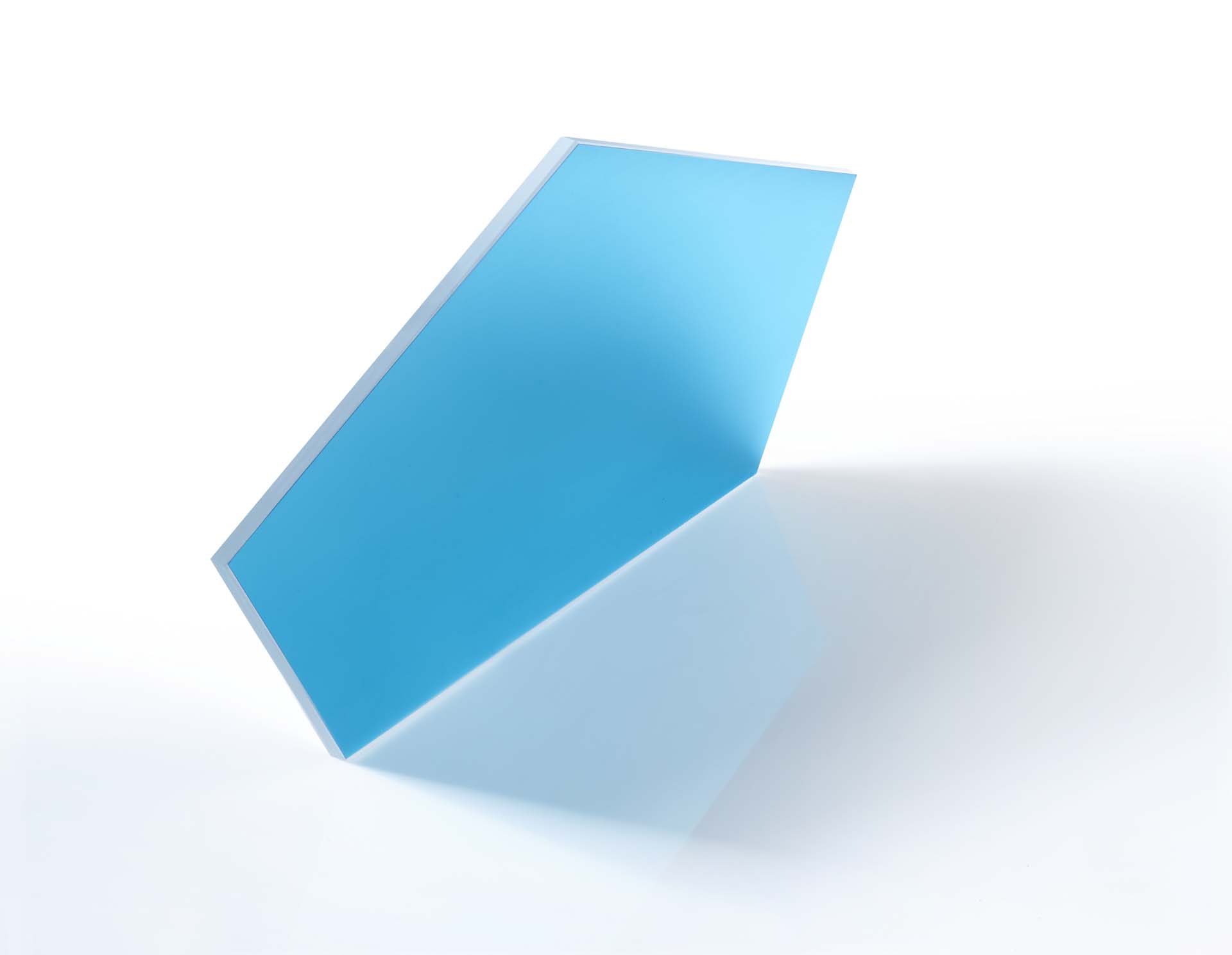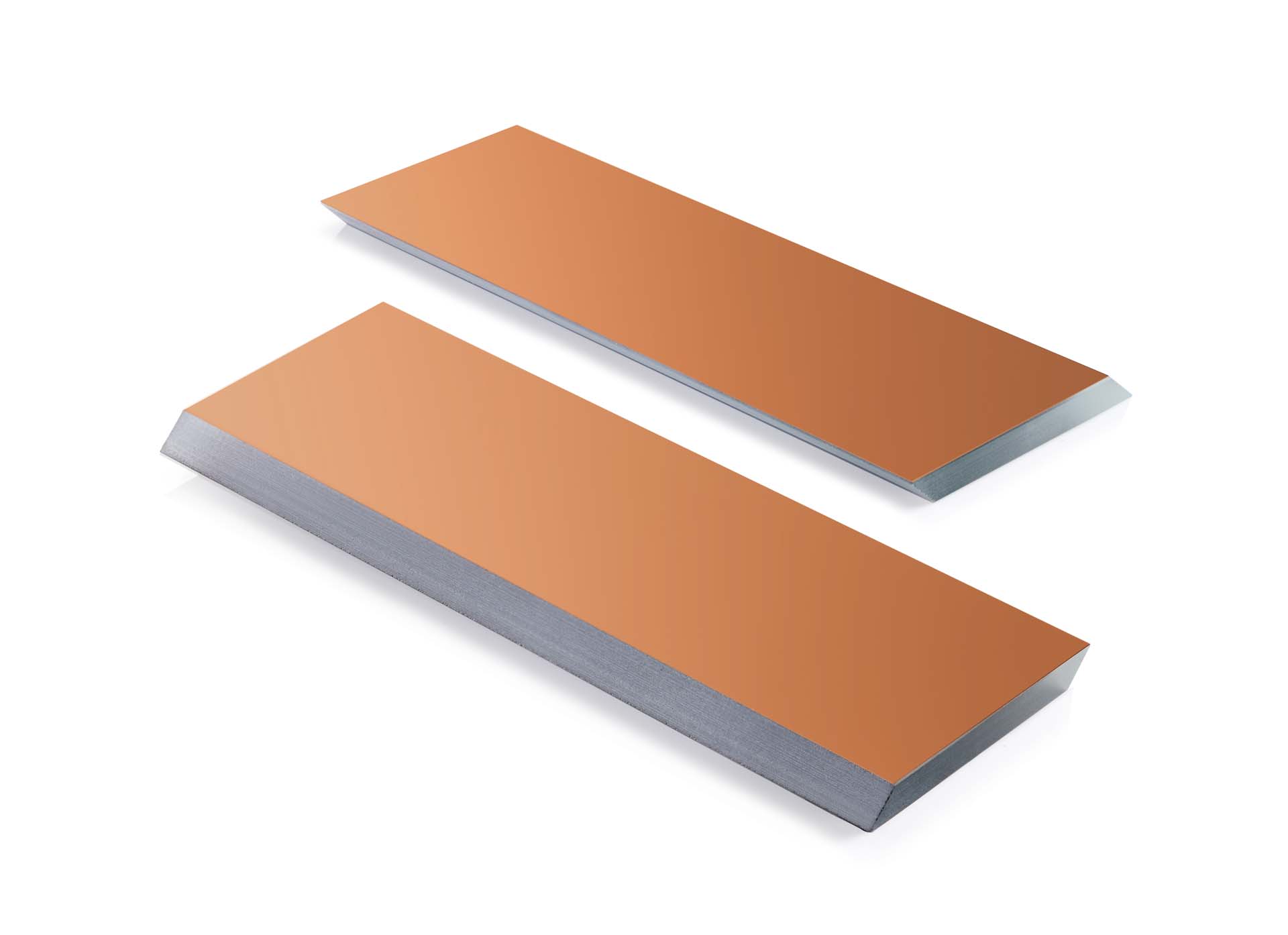Your contact persons
Want to find out more? - Contact us for customised solutions!
Mirrors are manufactured by depositing a metal layer or by employing dielectric layer systems. These coatings are also known as highly reflective (HR) coatings. Mirror coatings are designed to enhance reflection within specific wavelength ranges while concurrently minimising transmission.
Optical mirrors serve not only to reflect light, but also to regulate the intensity of radiation. Their individually adjustable reflection and transmission properties render them suitable for a broad spectrum of applications. Optical coatings typically consist of one or more layers applied to the substrate with varying thicknesses. At Bte, we provide a wide range of mirror coatings tailored to meet different optical requirements.




Highly reflective coatings, commonly known as mirror coatings, are often accomplished using metallic mirrors. These metallic layers, or metallic mirrors, are created through a process called Physical Vapour Deposition (PVD) coating. During PVD coating, high-purity metals are evaporated within a vacuum environment and subsequently deposited as thin layers onto the substrate. Depending on the chosen coating material and the thickness of the layers, both mirrors and absorbers as well as partially transparent surfaces can be achieved.
In most cases, transparent protective layers are added to the metallic coatings. These layers prevent subsequent oxidation of the metallic layers and enhance both reflection and resistance to mechanical damage.
Moreover, exceedingly thin metallic layers can be deposited onto transparent substrates to generate partially transparent coatings or beam splitter coatings.
Glass or plastic substrates are coated with a layer of aluminium within a high vacuum environment. The resulting aluminium mirrors are distinguished by their high, colour-neutral reflectance, spanning from ultraviolet (UV) to infrared (IR) wavelengths. This characteristic renders aluminium coatings exceptionally well-suited for broadband reflectors across the UV to far-infrared spectrum.
Moreover, the properties of aluminium mirrors can be further fortified by applying additional protective coatings (aluminium enhanced).
Advantages of aluminium mirrors:

Copper mirrors convince with their exceptional thermal resistance, making them ideal for applications where mirror substrates are subjected to high temperatures, such as those generated by high-powered lasers. Due to copper's excellent thermal conductivity, these mirrors exhibit remarkable mechanical stability and durability, particularly when supplied with adequate heat.
Furthermore, copper boasts a high level of reflectivity in the infrared spectral range. The optical characteristics within the visible range are wavelength-dependent and can be tailored through careful coating design.
Advantages of copper mirrors:

Silver possesses the highest reflectivity among all metals in the visible spectrum. Silver mirrors are primarily employed in the visible to infrared spectral range. Typically, they are safeguarded against "tarnishing," which refers to discoloration caused by sulphide formation, through the application of an additional oxide layer.
Advantages of silver mirrors:

In essence, the term "front surface mirror" refers to any mirror where the first surface encountered (boundary surface) is a mirrored surface. Unlike a back surface mirror, where the passing beam experiences strong reflection at the second boundary surface and weaker reflection at the first, a front surface mirror mitigates double imaging resulting from this beam path.
Mirror coatings are designed to reflect radiation across the UV, visible (VIS), and infrared (IR) ranges. Front surface mirrors typically employ metallic layers for their high reflectivity across a broad spectrum of wavelengths. Moreover, front surface mirrors with relatively thin metal layers can be fortified with additional dielectric layers.
Copper is also recommended as a reflective medium for infrared diodes. Typical front surface mirrors exhibit reflectance ranging from 88% to 92%, while highly reflective front surface mirrors can achieve reflectance levels of 94% to 99%. Aluminium is commonly utilised in the construction of front surface mirrors.
Advantages of front surface mirrors:

Rear surface mirrors, also referred to as second surface mirrors, feature a coating on the reverse side. They are highly resilient to external factors since the mirror glass is positioned on the front, while the mirror coating on the back can be further shielded, for instance, by protective films. However, back-surface mirrors entail certain drawbacks, including increased absorption losses and secondary reflections, leading to the occurrence of double images during image reproduction. While additional antireflection coatings can mitigate these issues to some extent, they cannot eliminate them entirely.
Advantages of back surface mirrors:

Compared to metal mirrors, dielectric mirrors, also known as interference mirrors, typically encompass narrower spectral bandwidths, and their reflectance is contingent upon the angle of incidence. However, they can achieve exceptional reflectance surpassing 99.9% in the visible range at a perpendicular angle of incidence, albeit within a limited spectral range. Broadband mirrors with slightly lower reflectance can also be fabricated.
Dielectric mirrors excel in directing, modifying, and imaging light beams. By tailoring dielectric layers with specific designs adapted to the application's requirements, surface reflection can be maximised, and radiation can be precisely controlled. Dielectric mirror coatings are engineered to optimise performance within specific wavelengths, enhancing defined spectral ranges. These coatings comprise multiple layers featuring alternating high and low refractive indices, known as alternating layer systems.

The primary objective of highly reflective coatings, or mirror coatings, is to maximise reflection within a specific wavelength range while minimising transmission. Highly reflective (HR) mirrors are characterised by their ability to reflect radiation to an extent approaching 100%. This exceptional reflectivity is achieved by complex dielectric layer systems, often referred to as interference layer systems. These systems incorporate coating materials with high (H/high) and low (L/low) refractive indices, optimising interference to enhance reflectivity.
Highly reflective coatings effectively diminish radiation losses attributable to transmission and absorption, resulting in mirrors that exhibit neutral colour reproduction even at high angles of incidence (AOI). Furthermore, dielectrically coated mirrors boast increased hardness and exhibit good resistance to chemical attack.
An illustrative example of highly reflective mirrors can be found in dental mirrors, such as mouth mirrors, which are used in dentistry.
Advantages of highly reflective mirrors:

Cold light mirrors are employed in situations where the heat generated by infrared radiation must be minimised. These specialized mirrors, typically constructed on glass substrates, serve to separate visible radiation from undesired heat radiation. Essentially, cold mirrors reflect visible radiation while allowing heat radiation to pass through, rendering them transparent to infrared wavelengths. By doing so, they effectively mitigate the heat load within optical paths.
Advantages of cold mirrors:

Functional coatings play a vital role in achieving specific properties such as sinterability, solderability, or electrical insulation, enhancing the functionality of surfaces. At Bte, we offer a diverse range of functional coatings tailored to meet various requirements.
Functional coatings that we apply include, for example:
These functional coatings serve multiple purposes, including improving sinterability, solderability, or electrical conductivity. They facilitate bonding processes, such as the attachment of power modules, or printed circuit boards to heat sinks through methods like sintering or bonding. Moreover, functional coatings contribute to electrical insulation and shielding against electromagnetic interference waves.
Furthermore, they address thermal management concerns by optimising heat dissipation and thermal conductivity. Functional coatings can also be utilised to create adhesive layers and composite structures, enhancing overall performance and versatility.

Want to find out more? - Contact us for customised solutions!